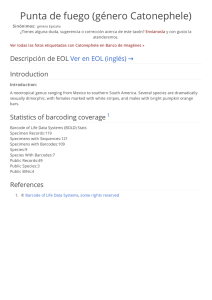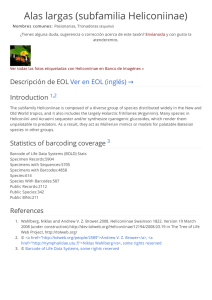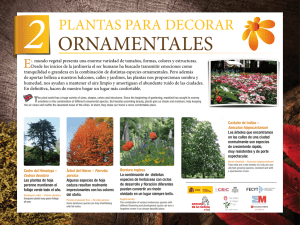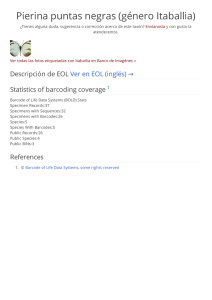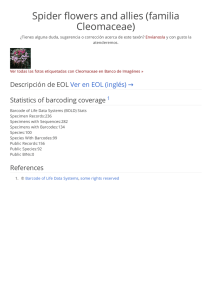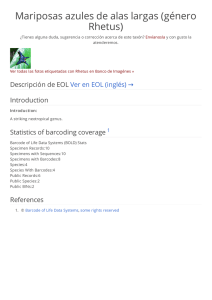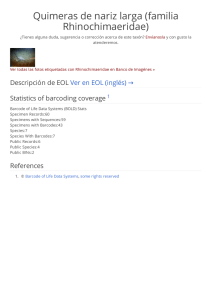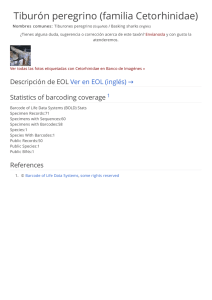Document
Anuncio
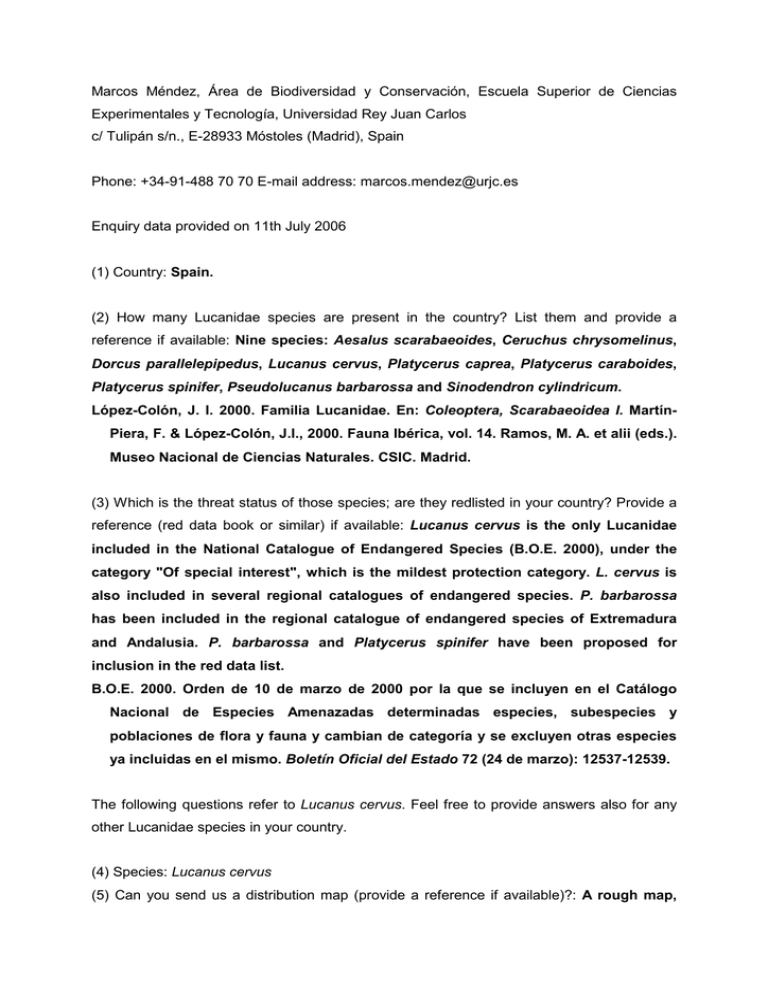
Marcos Méndez, Área de Biodiversidad y Conservación, Escuela Superior de Ciencias Experimentales y Tecnología, Universidad Rey Juan Carlos c/ Tulipán s/n., E-28933 Móstoles (Madrid), Spain Phone: +34-91-488 70 70 E-mail address: [email protected] Enquiry data provided on 11th July 2006 (1) Country: Spain. (2) How many Lucanidae species are present in the country? List them and provide a reference if available: Nine species: Aesalus scarabaeoides, Ceruchus chrysomelinus, Dorcus parallelepipedus, Lucanus cervus, Platycerus caprea, Platycerus caraboides, Platycerus spinifer, Pseudolucanus barbarossa and Sinodendron cylindricum. López-Colón, J. I. 2000. Familia Lucanidae. En: Coleoptera, Scarabaeoidea I. MartínPiera, F. & López-Colón, J.I., 2000. Fauna Ibérica, vol. 14. Ramos, M. A. et alii (eds.). Museo Nacional de Ciencias Naturales. CSIC. Madrid. (3) Which is the threat status of those species; are they redlisted in your country? Provide a reference (red data book or similar) if available: Lucanus cervus is the only Lucanidae included in the National Catalogue of Endangered Species (B.O.E. 2000), under the category "Of special interest", which is the mildest protection category. L. cervus is also included in several regional catalogues of endangered species. P. barbarossa has been included in the regional catalogue of endangered species of Extremadura and Andalusia. P. barbarossa and Platycerus spinifer have been proposed for inclusion in the red data list. B.O.E. 2000. Orden de 10 de marzo de 2000 por la que se incluyen en el Catálogo Nacional de Especies Amenazadas determinadas especies, subespecies y poblaciones de flora y fauna y cambian de categoría y se excluyen otras especies ya incluidas en el mismo. Boletín Oficial del Estado 72 (24 de marzo): 12537-12539. The following questions refer to Lucanus cervus. Feel free to provide answers also for any other Lucanidae species in your country. (4) Species: Lucanus cervus (5) Can you send us a distribution map (provide a reference if available)?: A rough map, including several mistakes, was published in Rosas et al. (1992). A detailed map has since then been published by Galante & Verdú (2000), with information updated to 1996. Below, an unpublished map is provided, based on data available in GTLI's data base in July 2006. Galante, E.; Verdú, J. R. (2000). Los artrópodos de la "Directiva Hábitat" en España. Organismo Autónomo de Parques Nacionales, Madrid. Rosas, G.; Ramos, M. A.; García Valdecasas, A. (1992). Invertebrados españoles protegidos por convenios internacionales. ICONA, Madrid. (6) Abundance (indicate numbers, population density or rank in a common-rare continuum, whatever that is known) or distribution (indicate number of 10 x 10 km squares occupied, number of known localities or other estimates): No estimates of abundance or density are available. A total of 582 squares of 10 x 10 km are occupied, from which 481 correspond to data after 1980. Over 800 localities known for the species. (7) Is this species protected in your country? (provide a reference if available -red data book, law, other reports-): Lucanus cervus is included in the National Catalogue of Endangered Species (B.O.E. 2000). It is also included in several regional catalogues of endangered species. B.O.E. 2000. Orden de 10 de marzo de 2000 por la que se incluyen en el Catálogo Nacional de Especies Amenazadas determinadas especies, subespecies y poblaciones de flora y fauna y cambian de categoría y se excluyen otras especies ya incluidas en el mismo. Boletín Oficial del Estado 72 (24 de marzo): 12537-12539. (8) Threat category (IUCN category if available, otherwise explain the meaning of the category): Officially it is considered "De interés especial" (IE) ("Of special interest"), which is the mildest protection category. Based on the map above, it shoul be rated as Lower Concern (LC) using the criterium B of the IUCN. (9) Is any population trend available? (provide a reference if available): No. (10) Which are the known or supposed sources of threat? (make it clear whether sources of threat are known or supposed): No quantitative information available. The main supposed source of threat is habitat destruction and fragmentation. Additional sources of threat which have been mentioned in the Spanish grey conservationist literature include road casualties, pesticides and collectionism, but their magnitude or importance remain unknown. (11) Representation in natural preserves (number of reserves, % of population in reserves): The species is present in some national parks and other protected areas, but no quantitative information available. (12) Current or planed projects for recovery of the species: The species is included in the Habitats Directive of the EU; Spain is supposed to design protection areas for this species. No information available on the degree of implementation of these measures.
